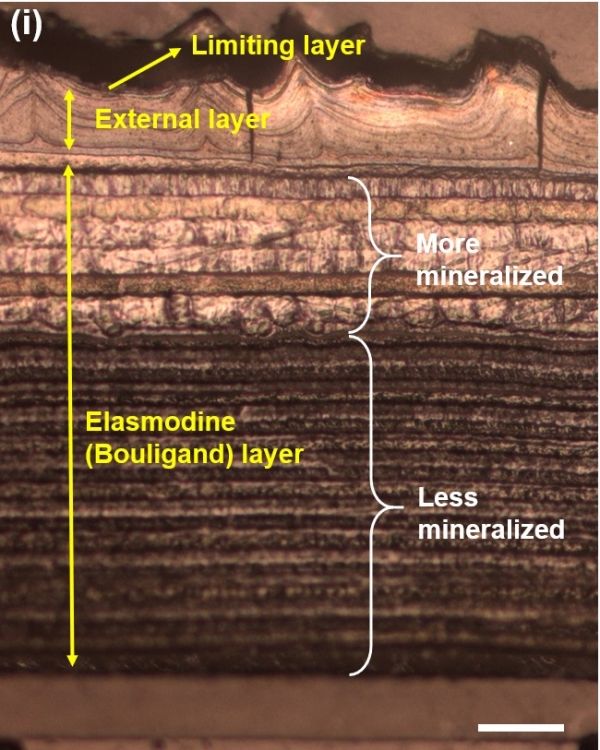Humans have drawn technological inspiration from fish scales going back to ancient times: Romans, Egyptians, and other civilizations would dress their warriors in scale armor, providing both protection and mobility. Now, using advanced X-ray imaging techniques, Lawrence Berkeley National Laboratory (Berkeley Lab) scientists have characterized carp scales down to the nanoscale, enabling them to understand how the material is resistant to penetration while retaining flexibility.
The researchers used powerful X-ray beams at Berkeley Lab’s Advanced Light Source (ALS) to watch how the fibers in carp scales react as stress is applied. As they wrote in their paper, published recently in the journal Matter, what they found “may well provide further inspiration for the design of advanced synthetic structural materials with unprecedented toughness and penetration resistance.”
“The structure of biological materials is absolutely fascinating,” said lead author Robert Ritchie, of Berkeley Lab’s Materials Sciences Division, who headed this work with Marc Meyers, a professor of nanoengineering and mechanical engineering at UC San Diego. “We like to mimic these properties in engineering materials, but the first step is to see how nature does it.”
Read more at DOE / Lawrence Berkeley National Laboratory
Image: Optical microscopy image of the cross-section of a carp scale showing a multilayered structure. (Credit: Quan et al., Structure and Mechanical Adaptability of a Modern Elasmoid Fish Scale from the Common Carp, Matter)


